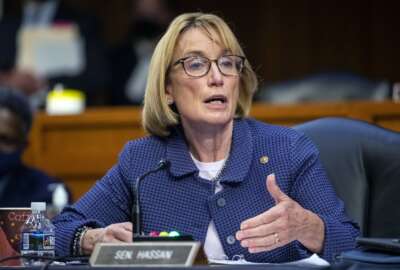It took 13 years — with some stops, starts and stumbles in between — but as of today, the federal government now has a single website designed to deliver detailed, searchable information about all federal programs.
The Office of Management and Budget flipped the switch Thursday on the new Federal Program Inventory, a platform it’s been building via various pilot efforts since December 2020. Officials acknowledge it doesn’t yet capture every single program: For now, only “domestic assistance” programs are included. But that broad category encompasses most federal spending, ranging from Social Security and Medicare to the smallest community block grant programs.
As of now, the database includes spending and performance data on 2,388 programs, said Diedre Harrison, OMB’s deputy controller.
“We think that this is exactly what we need in order to build on and iterate in the future,” she told Federal News Network in a Wednesday interview previewing the website’s launch. “One of the hardest things with the inventory was getting something that we could continuously make better, because all of our prior attempts weren’t all that satisfying. Everyone was excited about our 2020 pilot, but it just wasn’t comprehensive enough. For this one, we needed to create a new baseline. We now have that, and we can make it better. We can make the data higher quality, we can add new variables and new information. So today’s a big day, but this isn’t one-and-done.”
Congress first mandated the online, publicly accessible inventory as part of its 2010 update to the Government Performance and Results Act (GPRA). Since then, the Government Accountability Office has also been pressing OMB to create a central, reliable program inventory, saying it’s essential to give policymakers and the public a single, coherent picture of all federal programs — in part, to find duplicative programs and help assess how effective the existing ones are. The need to implement the inventory topped GAO’s most recent list of unresolved recommendations to OMB.
Harrison argued Thursday’s launch largely answers the implementation question, and said the past four years of pilots exceeded OMB’s expectations. No more pilots are planned; instead, future work will be a matter of building on the existing infrastructure.
“I think there’s two areas where we want to improve. One, we want to work with agencies, Congress and the broader community to make sure that the individual programs are the right programs. So if two or three programs are grouped together, and we need to separate them, we want to separate them,” she said. “I think the next area is we want to improve our search functionality. There’s a lot of information available about individual programs, but if we’re able to improve our search function, it will help you identify programs that have similarities more quickly, along with more information about their performance and evaluation.”
The new program inventory won’t have a significant impact on the ways in which agencies report data to OMB. That’s mainly because the new website uses the same data feeds that populate several existing federal databases, including the publicly-available ones at SAM.gov and USASpending.gov.
What’s new, Harrison said, is the ability to present all of that data on a single, easily-searchable platform. OMB thinks centralizing all of that data will be useful to non-governmental users like potential grant recipients, but also agency officials and members of Congress who are thinking about modifying or creating federal programs.
“One of our problems is always the question of who are our stakeholders, and what functionality do we need to build for what user? A lot of the feedback we got is that comparability is necessary. A member of Congress wants to be able to say, ‘Show me loans for this category,’ or an agency wants to be able to quickly find what other agencies are implementing a similar program,” she said. “Let’s say I’m interested in creating a program for housing, and the specific area I’m most interested in is construction rehabilitation programs. When I search, I can now see there are 36 programs that do this. Do I need to create a new program? I don’t know, I should probably go see whether or not these 36 programs are working. They don’t know how to do that today, because they don’t have a place to go find the 36 programs that offer construction rehabilitation dollars. So where we need to go now is, for each of those 36 programs, add as much information as possible to determine whether more money is required for one program, or whether you need to create a new one.”
Copyright
© 2024 Federal News Network. All rights reserved. This website is not intended for users located within the European Economic Area.





